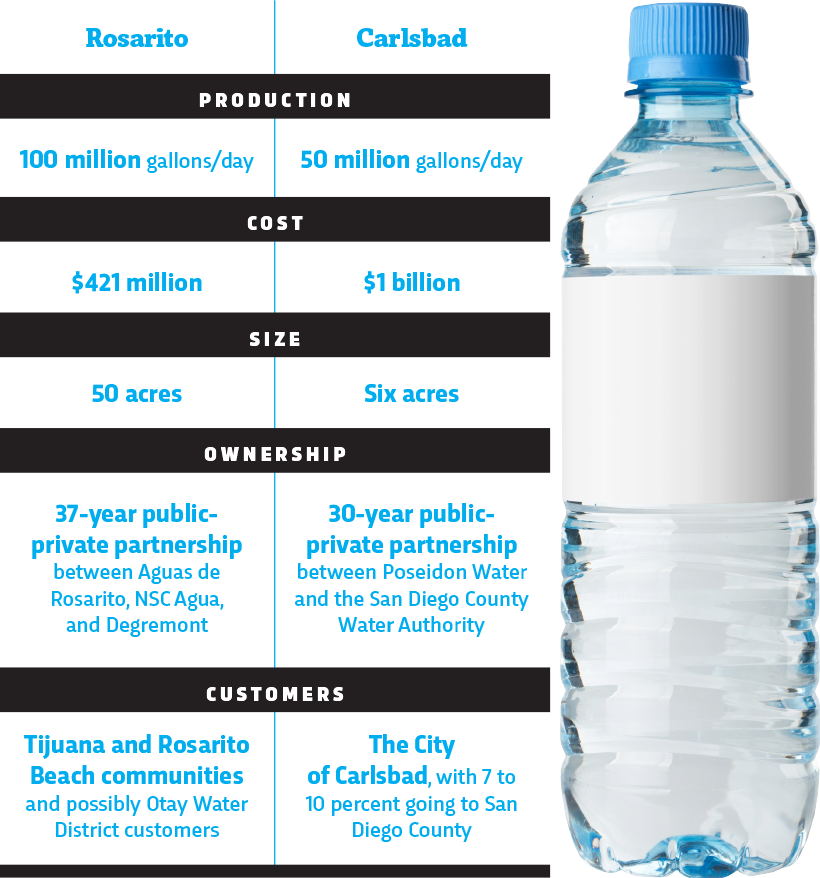Would you drink or bathe in water that comes from Mexico? What if it was treated and sourced from the Pacific Ocean?
Approximately 225,000 San Diego County residents who get their H2O from the Otay Water District—eastern Chula Vista and Otay Mesa, Jamul, Rancho San Diego, Spring Valley, and some southeastern areas of the county—could soon get their supply from a planned seawater desalination plant in Rosarito, joining their neighbors in Carlsbad who are getting water from the new Claude “Bud” Lewis Desalination Plant.
Mark Watton, Otay Water District’s general manager, says the district is in the process of obtaining a presidential permit from the US State Department to allow construction of a pipeline that would carry up to 50 million gallons of water a day from existing pipelines in Tijuana (which already transports water from the Colorado River) and across the border.
“We aren’t sure if there will be a delay with people settling in with the new administration,” Watton says. “We haven’t been advised of any concerns on the part of the State Department.” The Otay Water District initially applied for the presidential permit on November 25, 2013. Since then, an environmental impact draft and biological survey have been completed.
The district also needs a permit from California’s Division of Drinking Water to allow water to be transported from Mexico and ensure it meets drinking standards.
“We have a ways to go,” Watton says. “We have not hit any fatal flaws, but there is lots of work ahead on that one. We remain hopeful that the remaining permits will be on time for the initiation of the second phase of the desalination project.”
If everything goes according to plan, the district would initially purchase 10 percent of the 100 million gallons the Rosarito desalination plant would produce a day, and it could increase to as much as 30 percent—30 million gallons—daily.
Plans for the $421-million reverse-osmosis plant were officially announced in August 2016. Consolidated Water, headquartered in the Cayman Islands, along with three Mexican companies, entered into a 37-year public-private partnership with the state of Baja California and signed a contract to design, construct, finance, and operate the facility.
The groundbreaking is slated for this summer; the first phase must be operational within 36 months of commencing construction, with the second phase following by the end of 2024.
Ounce for Ounce
The proposed water desalination plant in Rosarito, Mexico, dwarfs the one in Carlsbad, the largest in the U.S. Here are some other key differences between them.

Tags: Environment, Ocean, Rosarito, Water






























